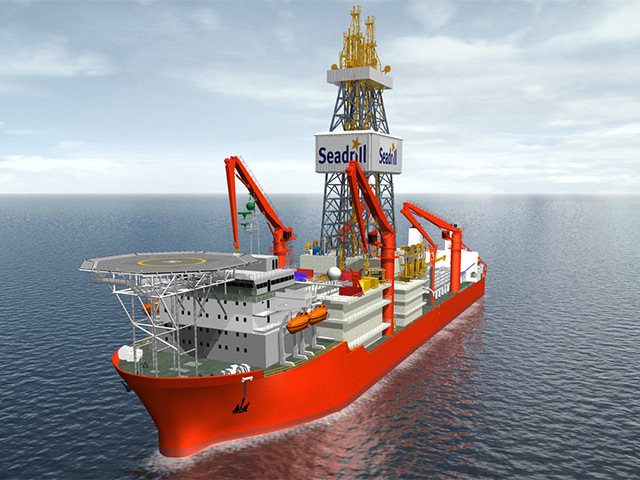
Prospects for offshore drilling are robust, especially for deepwater units and premium jack-ups, according to Seadrill. The dual-listed but fundamentally Norwegian company, which has $billions worth of new rigs on order, sees ample strength to justify its massive investment in new units.
It says utilisation for the global ultra-deepwater fleet remains at 100% and a total of 21 new units will be delivered this year and 21 units in 2014. Moreover, only two of the new-builds due into service are without work and therefore immediately available, while 15 of the new-build rigs due next year are currently without contracts.
“However, specific discussions are ongoing for most of the uncommitted units and it is likely that the fleet will remain 100% utilised,” says Seadrill in its latest analysis.
“The fact that only 11 new units have been ordered for delivery in 2015 coupled with the schedule for significant new ultra-deepwater development drilling, may lead to a tighter market.”
Africa and the US Gulf of Mexico were the predominant regions for ultra-deepwater contracts during Q1 this year and the company expects this trend to continue through the remainder of the year.
Seadrill believes that Incremental demand from Asia, Brazil and the Mexican Gulf of Mexico is likely to further diversify and tighten the supply demand balance.
“We anticipate an increasing diversity of contract terms in the ultra-deepwater market with relatively short-term contracts being related to exploration drilling and activity from small and mid-sized independent oil companies.
“This customer segment is counterbalanced by long-term drilling campaigns underwritten by development drilling programmes and major international oil companies’ exploration needs.
“We remain optimistic on the outlook for this segment and expect full utilisation to continue,” says Seadrill.
“The investment case for 6th and 7th generation ultra-deepwater drilling units is further supported by the fact that several operators are now replacing 4th and 5th generation deepwater units with modern equipment in order to meet new requirements and add additional safety margins to their operation.”
Furthermore, according to Seadrill, oil companies are increasingly favouring contractors with proven rig delivery experience, a history of safe and efficient operations, established infrastructure, and experience and presence in the major deepwater basins.
Fortunately for drilling contractors, oil companies continue to increase their budgets and spending for ultra-deepwater investments by double-digit numbers; that means a lot of drilling.
Turning to premium jack-up rigs (those built after 2005 and capable of working in water depths to at least 107m (350ft), Seadrill says demand remains strong with utilisation above 95% for the past year. This is set against a background of rising demand.
There is also a clear trend that jack-up contracts are signed earlier and have longer terms than they had a year ago.
“We have seen several contracts in the market executed with contract duration between three and seven years,” says the company. “Asia and the Middle East continue to be the predominant source of demand for high specification jack-ups.
“We expect this trend to continue for the foreseeable future, supplemented by increasing high specification jack-up demand in other areas. Pemex in Mexico and major oil companies in West Africa, in particular, are increasingly interested in securing new units to replace ageing assets.”
Essentially, oil companies continue to shift their focus toward higher specification jack-up rigs and the benefits in efficiency and safety that these units can deliver.
There is also increased demand for jack-ups capable of drilling HP/HT (high pressure/high temperature) wells which require units with higher pressure capacities and the greater deck space found on modern units.
“These trends are supported by the increased number of cold stacked jack-ups since Q4 2012, indicating reluctance by oil companies to contract these older units even in geographic markets where demand is perceived to be greater than the marketed supply,” says Seadrill.
“Our continued belief in the need for fleet renewal within the premium jack-up market is evidenced by Seadrill’s decision to order four high specification jack-ups in the first quarter of this year.”
Currently 311 jack-ups or 63% of the total fleet of 493 jack-ups are older than 25 years.
By contrast, the four new jack-ups ordered by the company will increase its jack-up fleet to 28 units, with an average age of 2.8 years.
